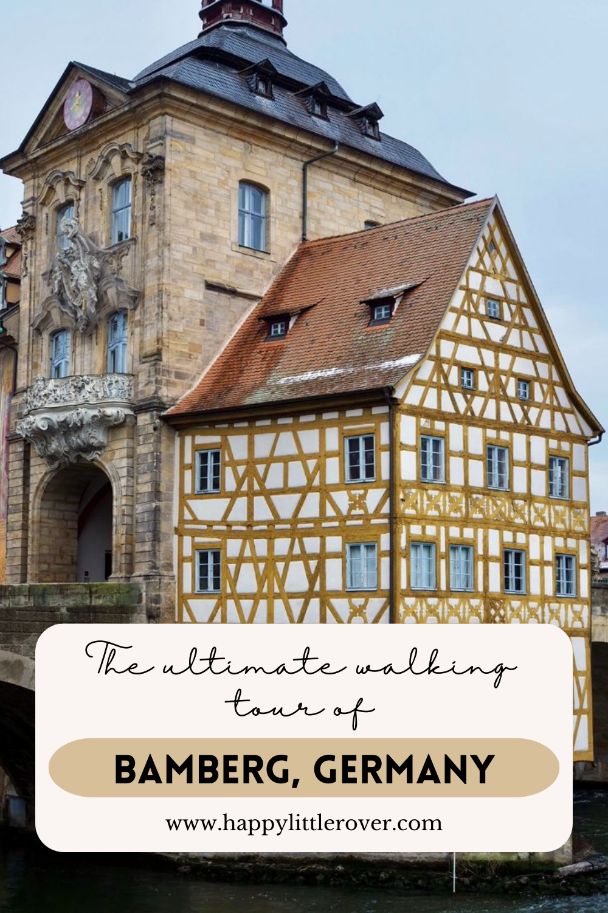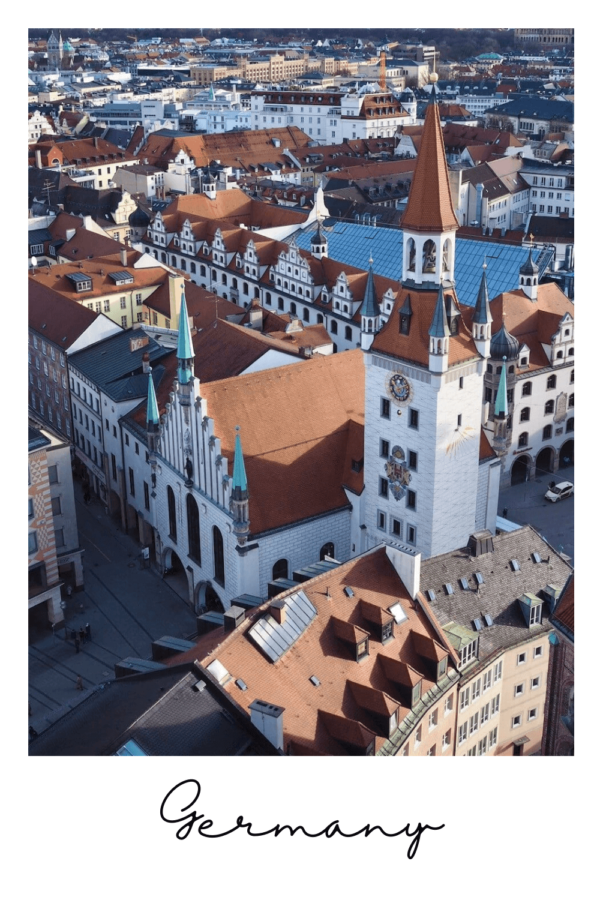The ultimate walking tour & map of Bamberg, Germany
Are you searching for the perfect walking tour and map of Bamberg, Germany?
Do you find your life sadly lacking in half-timbered fisherman’s cottages, or a postcard perfect town hall just hanging out in the middle of a river?
How about a sleepier answer to the hustle and bustle of Nuremberg but with just as much charm?
Or maybe you’re looking for a medieval centre so well preserved that it’s UNESCO listed?
Come with me on a carefully curated voyage through this adorable little village.
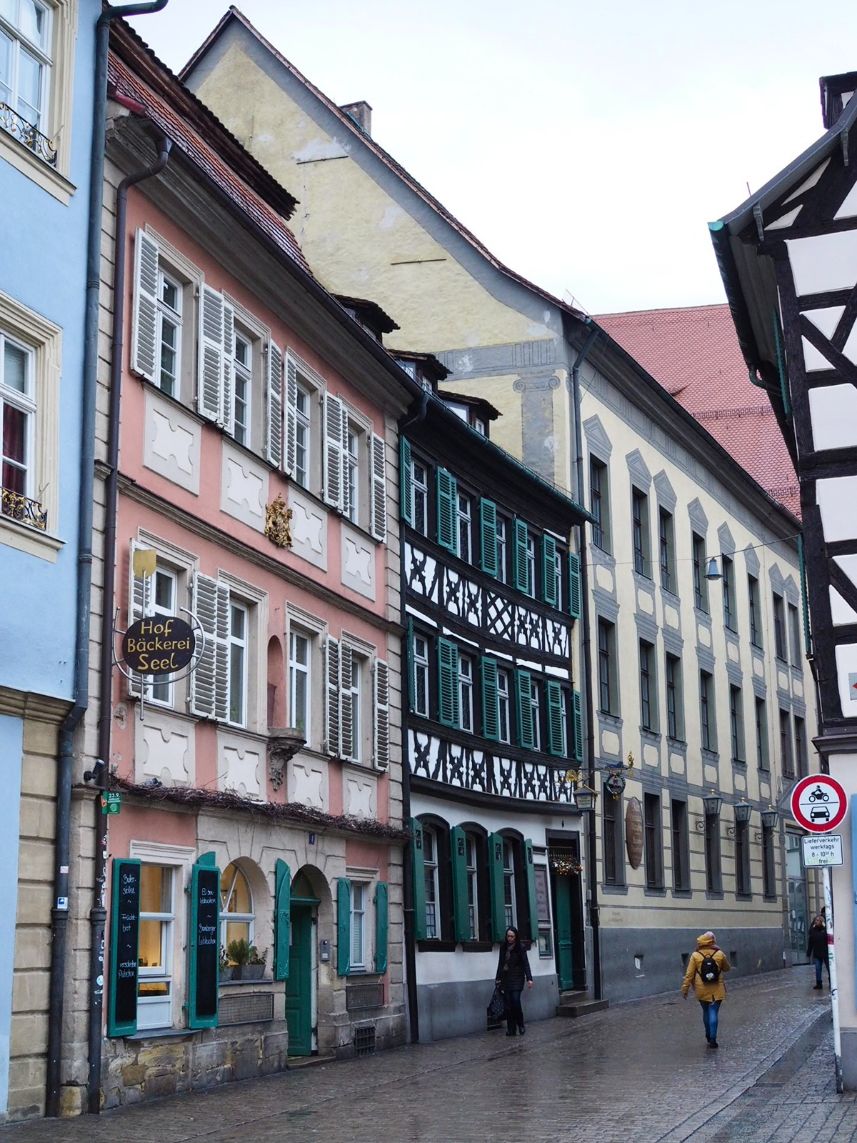
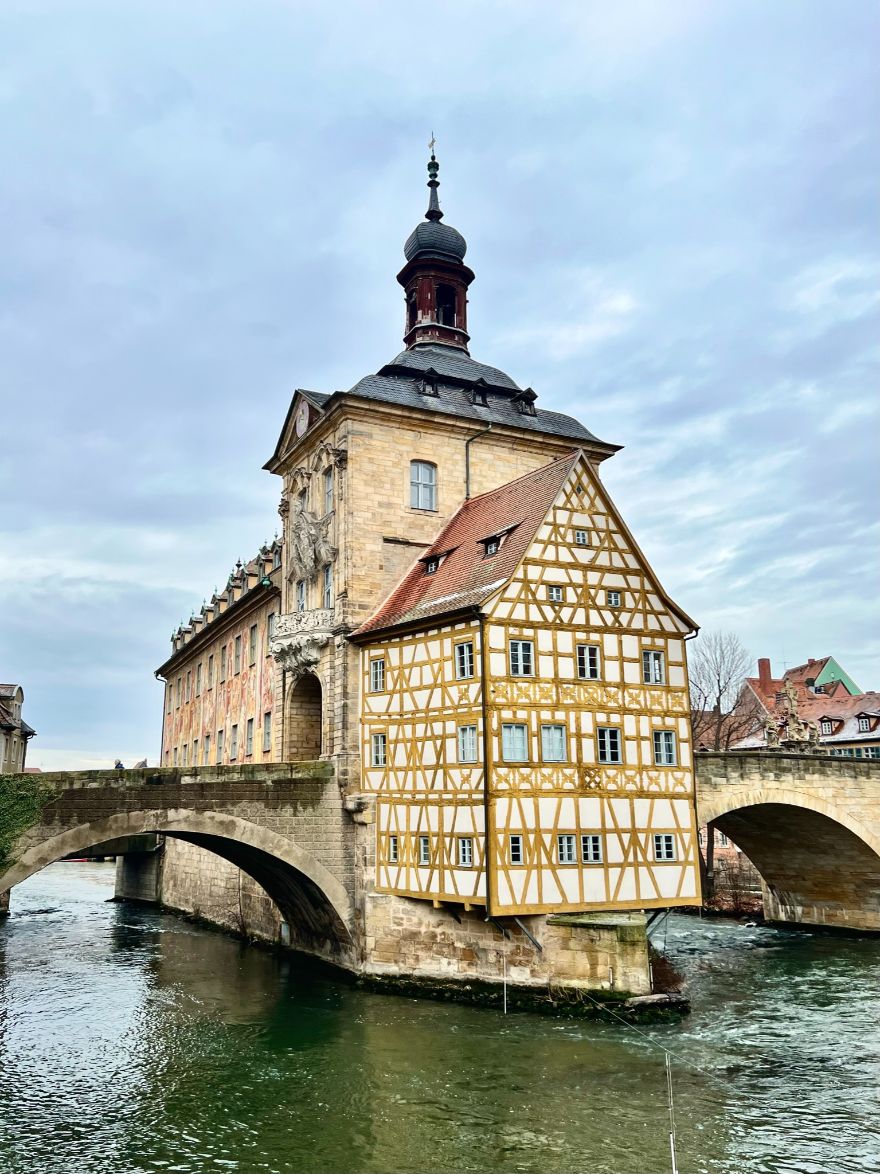
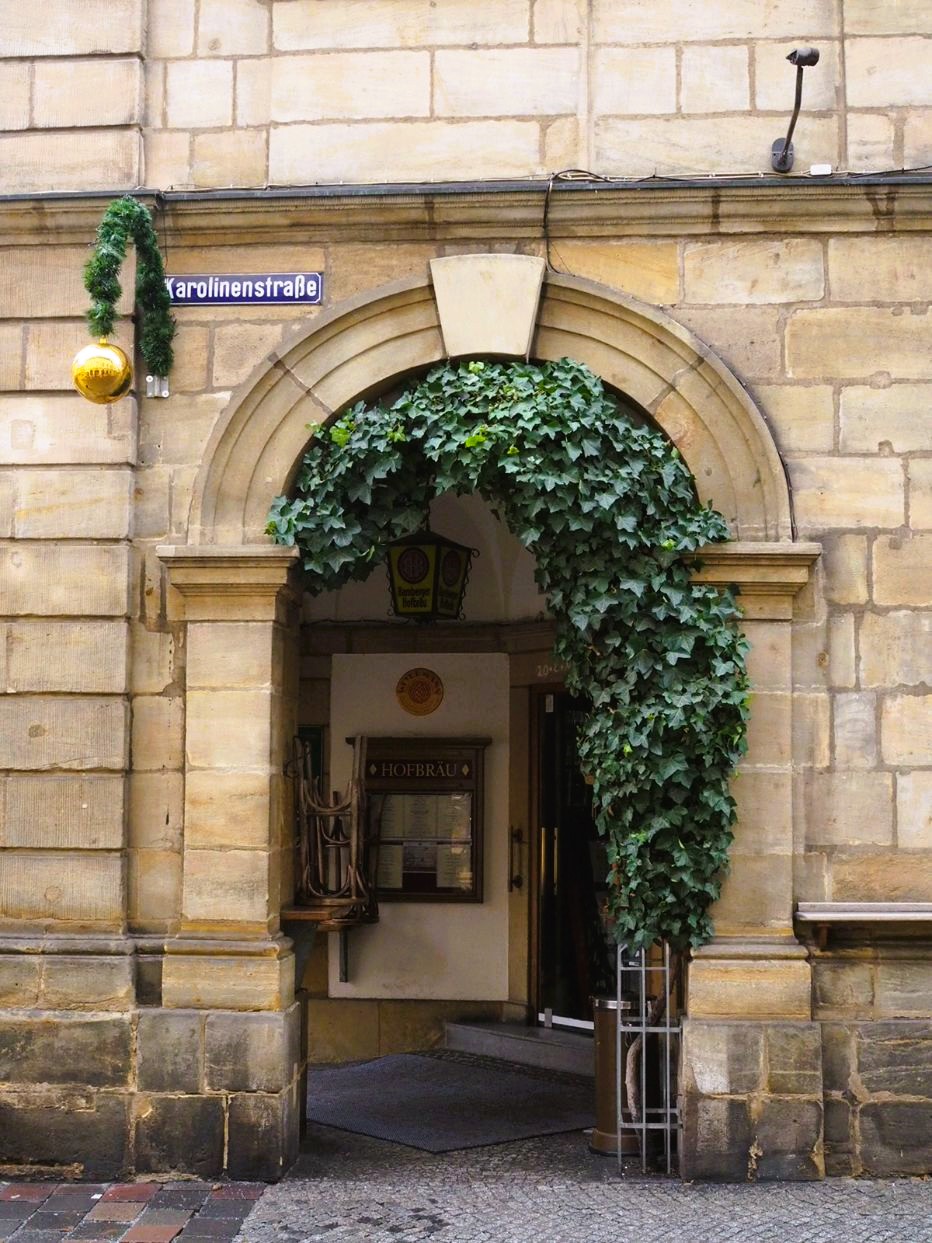
Everything you need to know for your walking tour of Bamberg, Germany
Here’s a quick history of Bamberg to keep you entertained on the train ride up.
Way back in 1007, the Holy Roman Emperor, Heinrich II, decided that Bamburg could one day rival Rome (maybe not so on the money 1000 years later).
To be fair to old Heinrich, both cities do have the famous seven hills within their boundaries.
To help bump up its status, he ordered a gigantic cathedral to be built there and poured money into turning this village into a cultural centre.
He, and his wife Kunigunde, were both buried in their imposing church high on the hill above Bamberg and for a number of centuries, it was considered a major city.
It gradually fell out of popularity though and never had the growth and wealth enjoyed by nearby Nuremberg.
Which is part of the reason why the buildings are so beautifully preserved today, it was never noteworthy enough to be bombed during the Second World War.
In fact, it’s so well preserved that it was added to the UNESCO World Heritage list in 1993 for being an outstanding example of medieval architecture.
Restored bit by bit from the 1950’s onwards, you can go through a virtual timewarp and experience the buildings almost exactly how they were in the Middle Ages. Don’t forget your camera!
Short on time? Take a look at my guide to the best day trip from Nuremberg to Bamberg
Map of Bamberg, Germany with sights marked
I’ve compiled a list for you of all the main sights that we cover on this walking tour of Bamberg, Germany.
If you’re just keen to grab the map and the list of spots, copy this part down.
Read on further for the full rundown on each spot.
Note: I’ve included the German names for you as this is how you’ll likely find them easiest on maps.
1. Grüner Markt
2. Maximilanplatz
3. Kath. Kirche St. Martin
4. Neptunsbrunnen
5. Brunnen am Obstmarkt
6. Altes Rathaus
7. Geyerswörthsteg
8. Kaiserin Kunigunde statue
9. Klein Venedig
10. Am Leinritt
11. Obere Sandstrasse
12. Schlenkerla
13. Fortunatabrunnen
14. Bamberger Dom
15. Bamberger Reiter
16. Alte Hofhaltung
17. Schöne Pforte
18. Neue Residenz
19. Rosengarten
Bonus sights
20. Kloster Michelsburg
21. Altenburg
From the main train station to the Obstmarkt
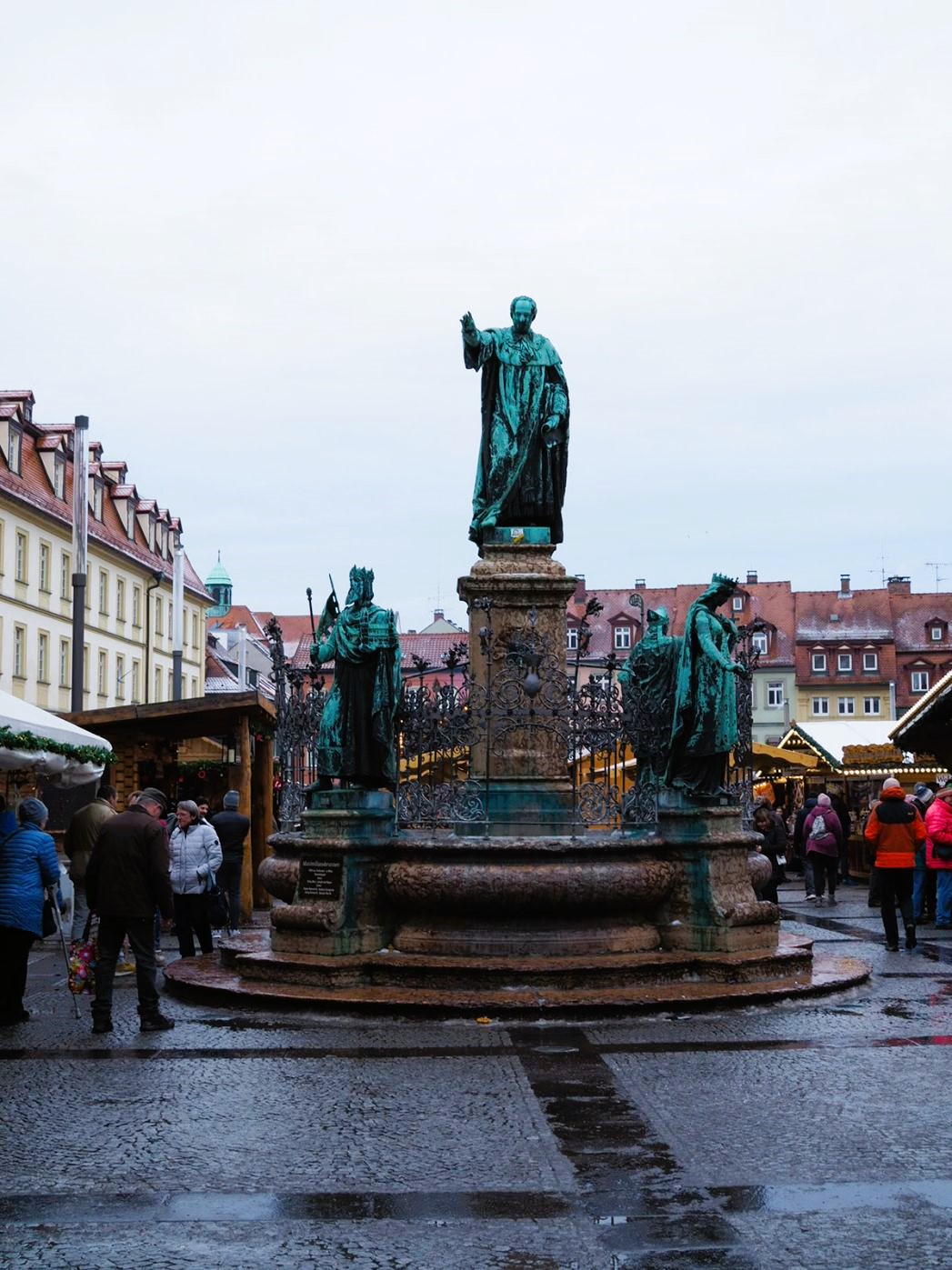
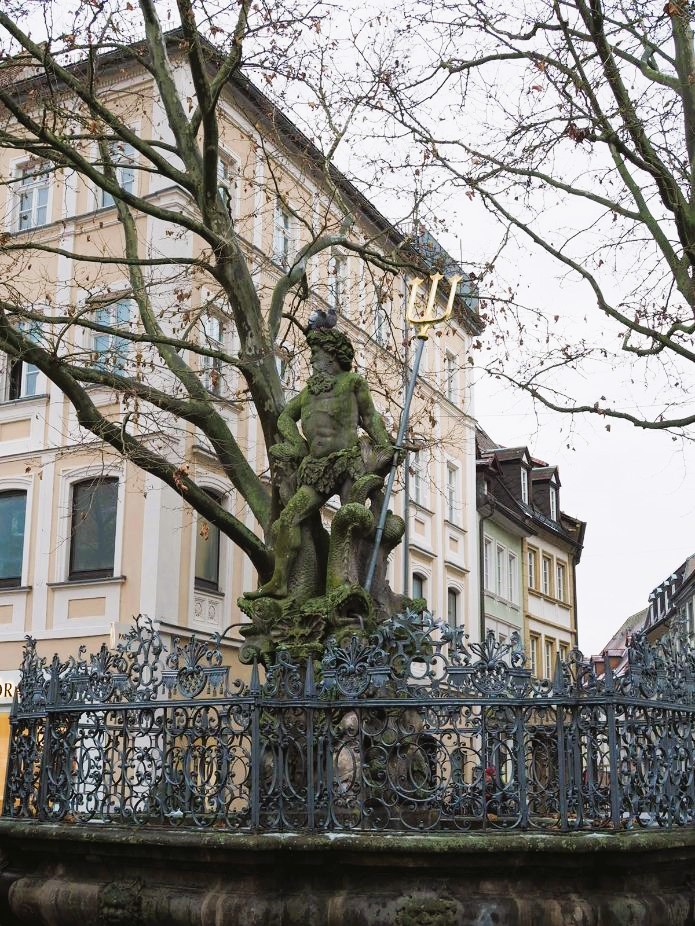
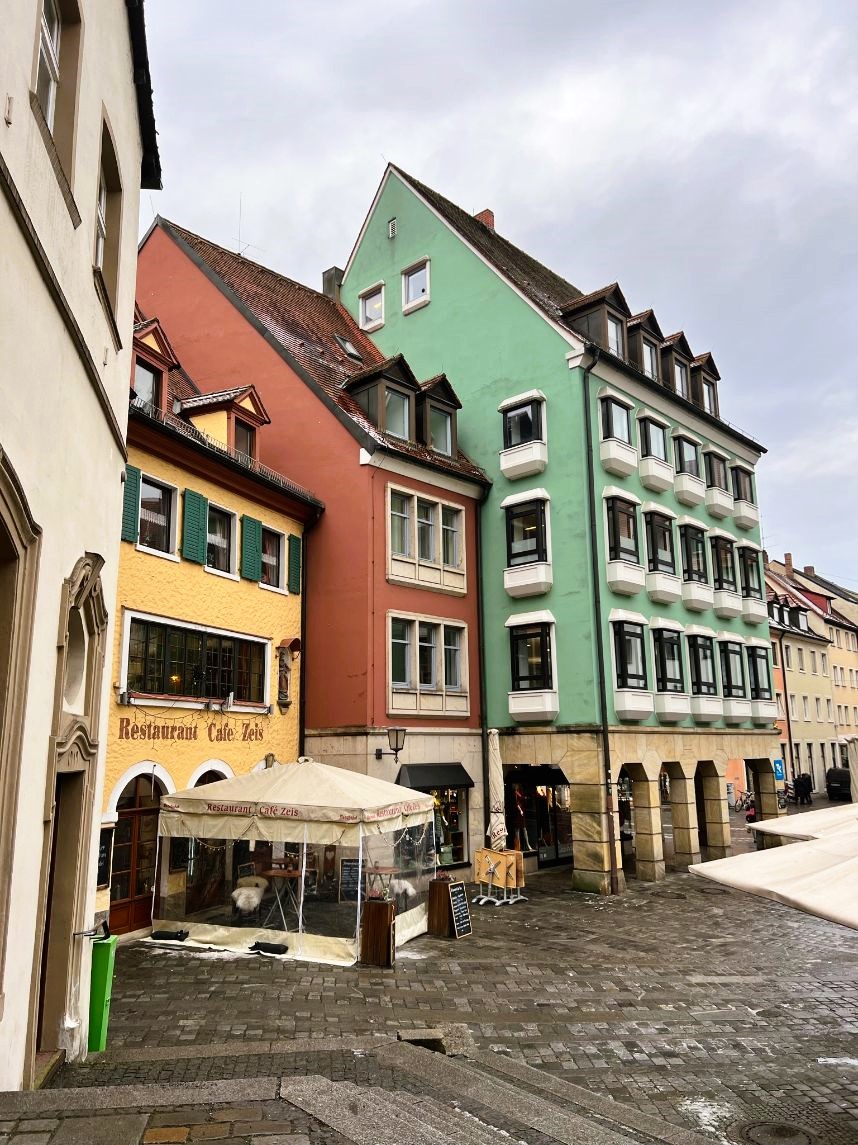
Alright, your train is pulling into the station, time to jump off and explore the quaint little village.
If you didn’t grab breakfast before the train ride from Nuremberg, you could stop by a bakery for a pastry, you’ll pass a few on your way into the town centre.
Walk down Luitpoldstraße, turn onto Obere Königstraße and then cross over to Kettenbrückstraße.
Following this street will then lead you into the Grüner Markt, the start of the pedestrian zone in Bamberg.
Instead of a pastry, you could head to one of my favourite cafés in Bamberg – Café Nika. They have delicious waffles, bagels and fresh donuts ready and waiting to fuel you up for the rest of your day trip. Plus good coffee!
They open at 9am and you’ve got just a short walk from here through Maximilianplatz back to the main sights.
Don’t miss the fountain – Maximilianbrunnen – topped with the namesake King Maximilian Joseph, this is also the site of Bamberg’s Christmas market during December.
Keep heading further along the Grüner Markt, often lined with market stalls selling fruits and vegetables.
As you stroll, you’ll see the grand Kirche St. Martin on your righthand side. Step inside if you’d like to see a seriously imposing Baroque altarpiece.
Past St. Martin’s, you’ll come to a popular meeting point for locals: the Neptunsbrunnen.
The god of the sea, Neptune stands atop this popular fountain, locally he’s known by his nickname of the Gabelmann or “fork man” in English.
The pigeons also seemed to be fans when I was there. Try to resist the smell of the caramelised nuts cooking nearby!
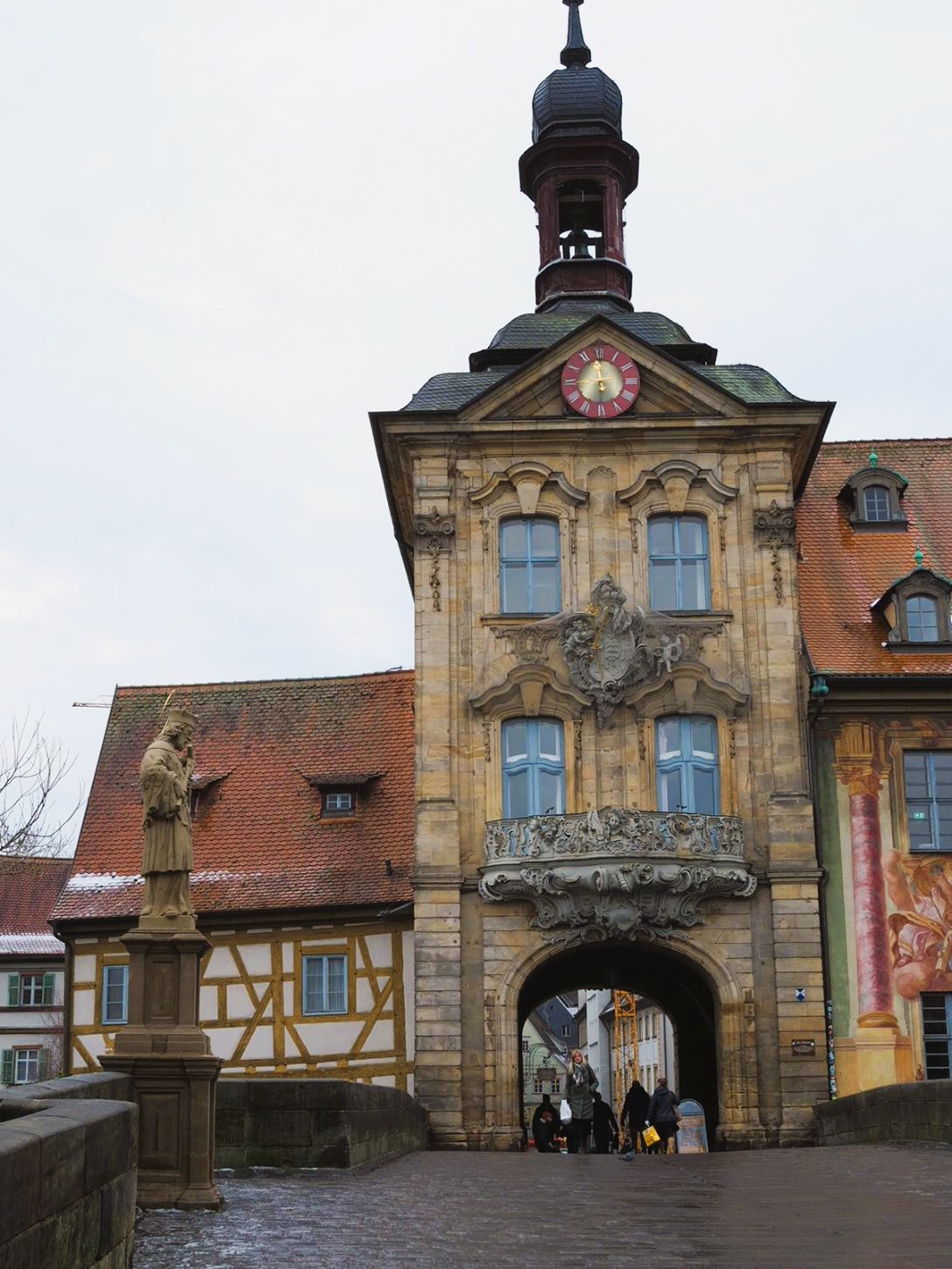

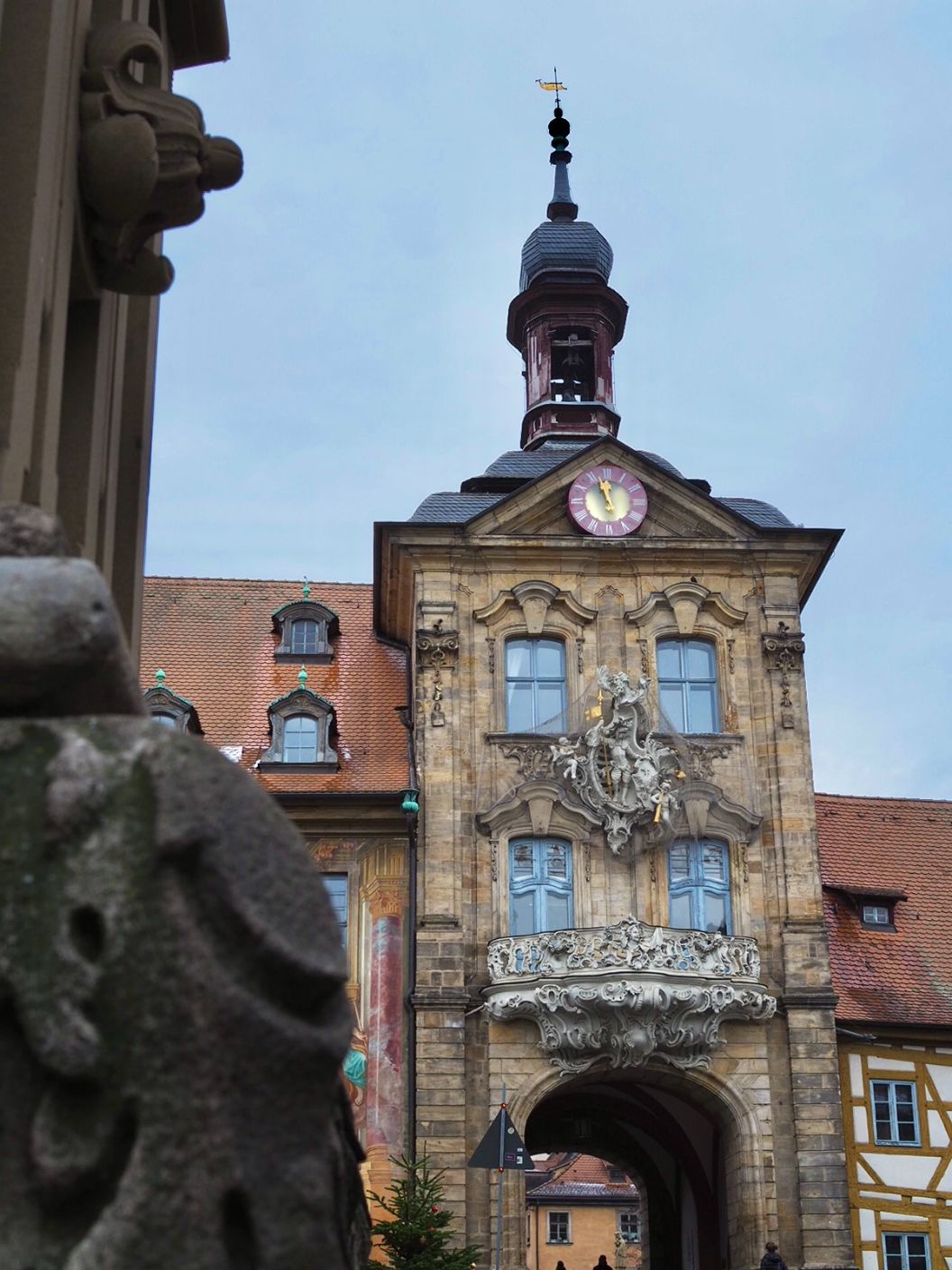
We’re all here for the Rathaus
Now continue on down the street until you reach the sweet little square of the Obstmarkt, surrounded by boutiques and cosy cafes.
You’ll come back this way if you’re leaving via the railway station so make a mental note of which souvenir shops looked good.
Time to wander over the Obere Brücke to see the star of the show.
Welcome to the most iconic building in Bamberg and the feature of more postcards than you can poke a stick at.
The majesty of this Gothic building, covered in beautiful technicolour frescoes, comes with an interesting back story.
According to legend, the bishop wouldn’t give any land to the townspeople so that they could build a town hall.
So, they decided to build it in the middle of the Regnitz river instead.
Whether this is true or not, it makes for a good story and the Town Hall looks rather picturesque sitting out in the middle of the water.
Wander around the building and don’t miss the cherub’s leg sticking out halfway up the wall and the angel also flying directly out from the murals.
The gigantic coat of arms and lavishly decorated balconies were added in the 1700s, the original building itself was rebuilt to its current form in the 1400s.
And the little half-timbered house that dangles out over the Regnitz was actually a home for the leader of the town guards, talk about prime real estate!
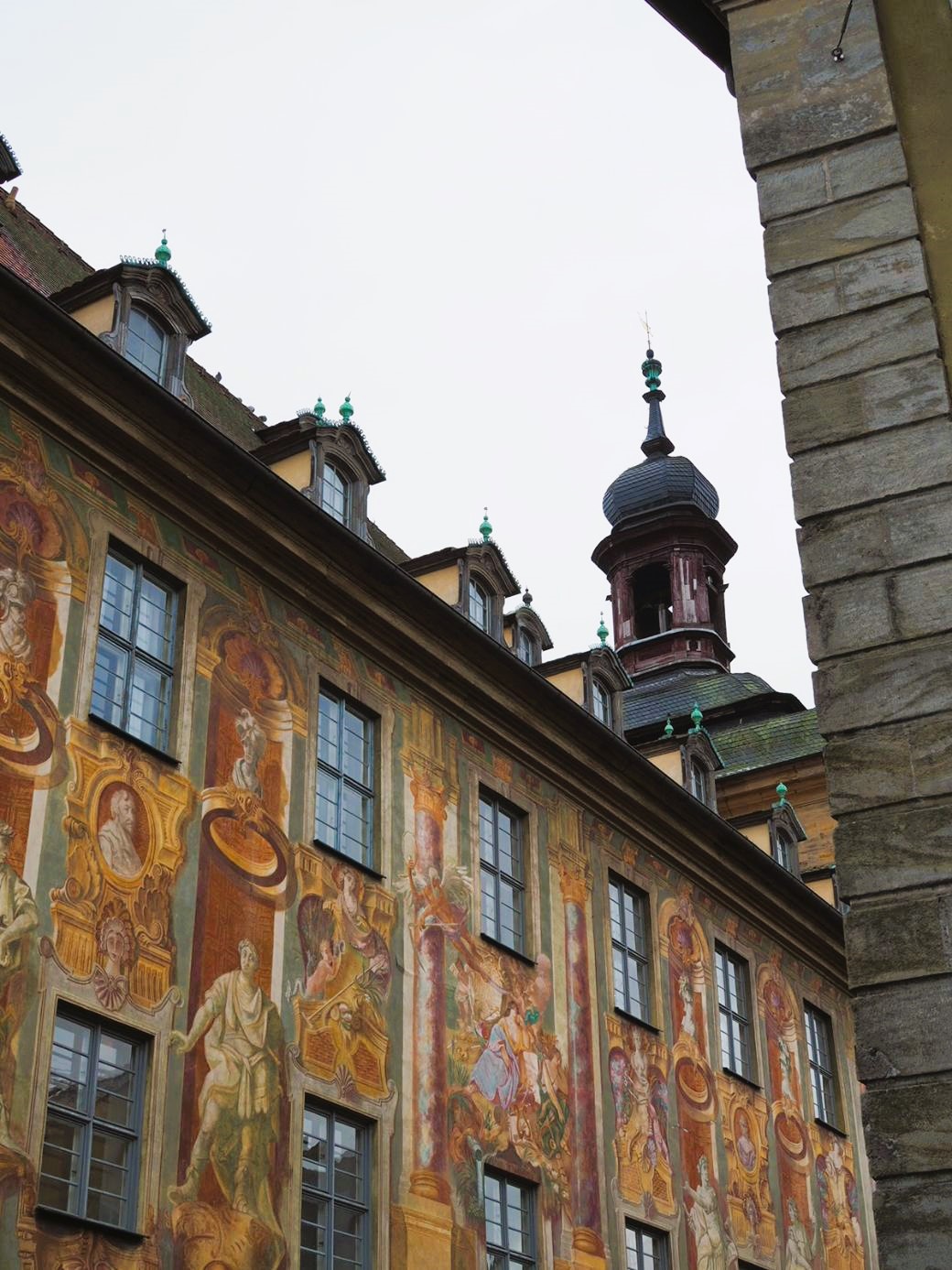
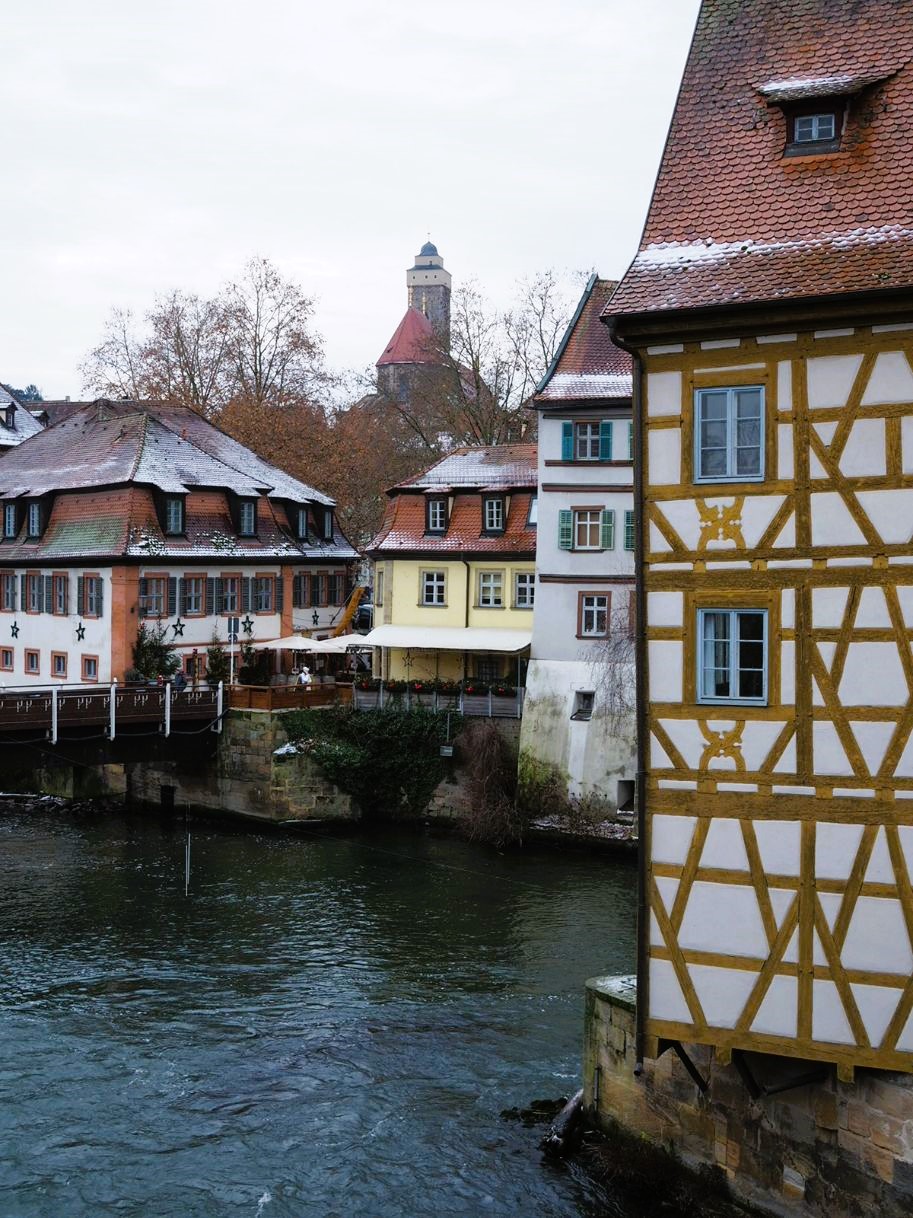
Head over onto the Geyerswörthsteg bridge to get the best view of the house and replicate those postcard shots.
Don’t forget to admire the views in the opposite direction over the water mill and channels running through Bamberg.
The yellow manor connected to the end of the bridge is part of the Geyerswörth Palace, built on an island right in the middle of the Regnitz.
One time home of bishops famous for burning witches alive – there are some very unpleasant aspects of the Middle Ages – these days, the central courtyard has a beautiful garden. Worth a stop if you’re here in the warmer months.
Heading down onto the Untere Brücke, you’ll come to a statue of the Empress Kunigunde, wife to Heinrich II and patron of Bamberg.
Here she’s shown in flowing robes, smiling down benevolently on the citizens of her beloved Bamberg.
On the left, you can admire the Baroque blue and white façade of the Heller Haus and to your right, you’ll see the banks of the former fishing village, now known as Klein Venedig or “Little Venice”.
Klein Venedig, aka Little Venice
These stunning little houses, with their intricate gardens and boats tied up out the front, run along the banks of the Regnitz.
The locals actually still use their mini boats to get around on the river as needed, which I love.
If you’re visiting in the warmer months, unlike when I went in mid December, there are boat tours available so you can see all the cottages from the water.
But you don’t need to go via watercraft to appreciate this scenic little spot.
One of the better viewpoints is right near Empress Kunigunde, head over to the street named “Am Leinritt” to be able to view the houses from across the river.
Wandering your way up to the Markusbrücke will give you the best views of the little houses, they’re at their most beautiful in the spring and summertime when the gardens are in full bloom.
While not quite as famous as La Serenissima in Italy, it’s worth a quick stroll before we go find more of Bamberg’s attractions.
From Am Leinritt, head over to Obere Sandstrasse for a stroll along some of Bamberg’s oldest shops and houses.
And try to avoid stopping every half a metre for more photos if you’re like me when it comes to cute cottages.
If you’re looking for some souvenirs while you’re here, this part of the old town, along with the Grüner Markt, has plenty of little shops selling postcards and knick knacks.
Equally important if you’d like to get a shot of the Bamberg Cathedral without any scaffolding, when I visited some of the towers were being carefully restored.
Which is great to see for the UNESCO status of Bamberg but less so for my photography.
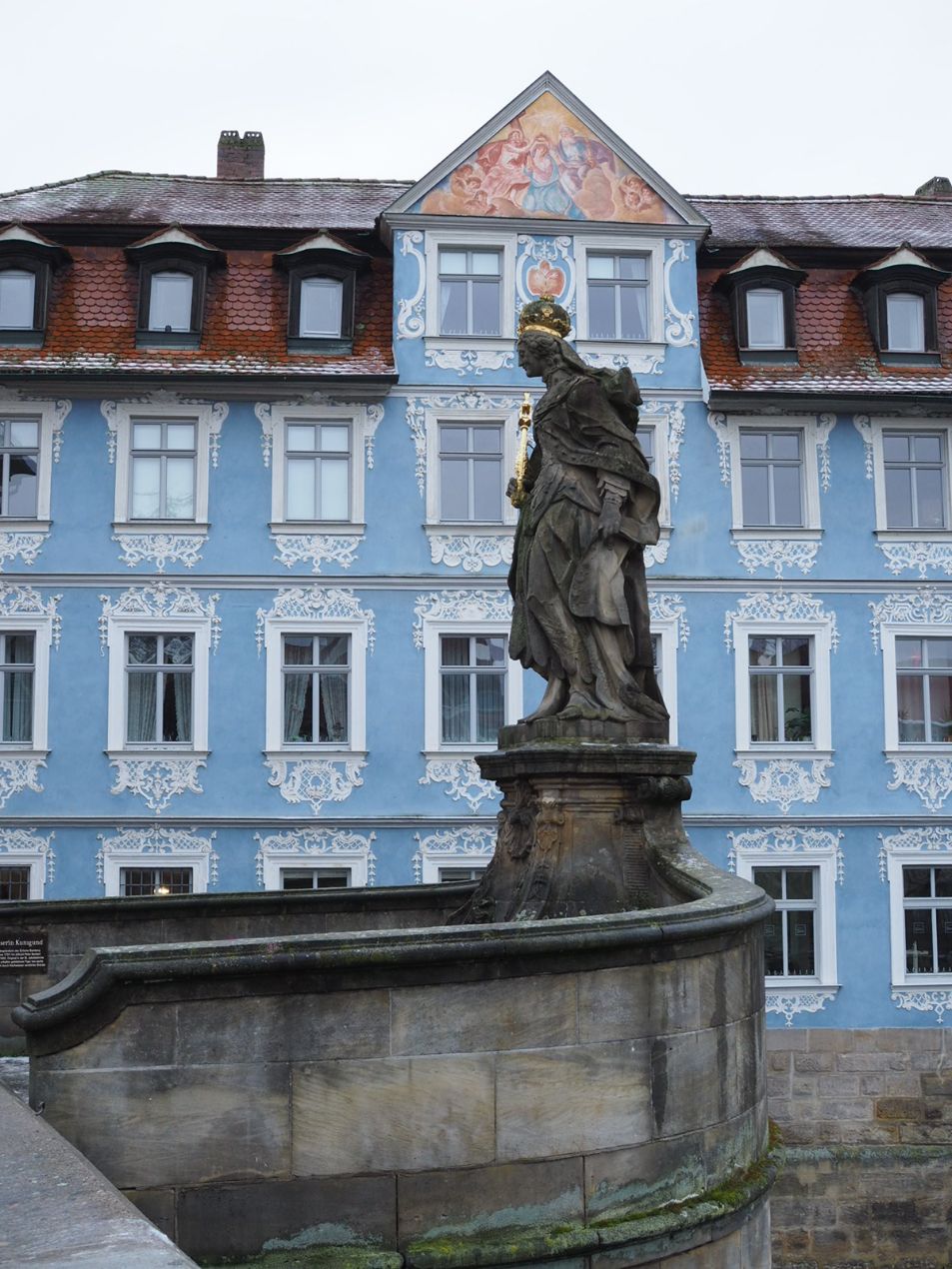
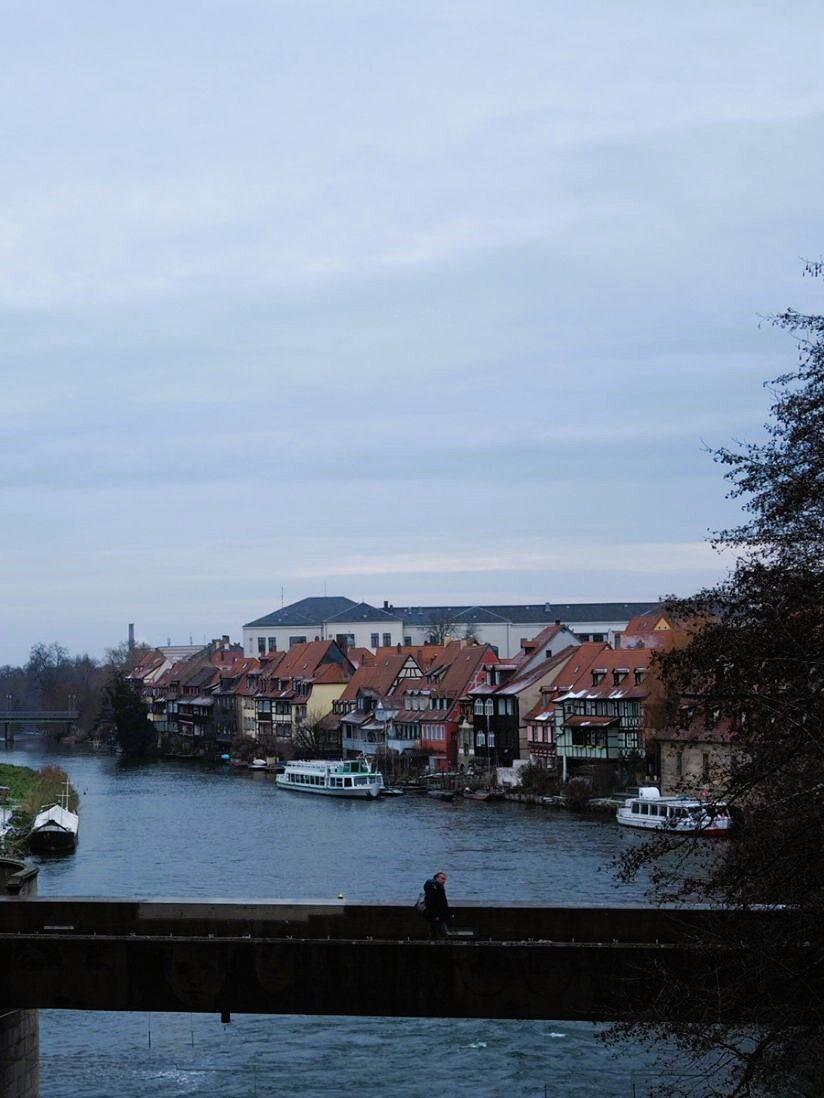
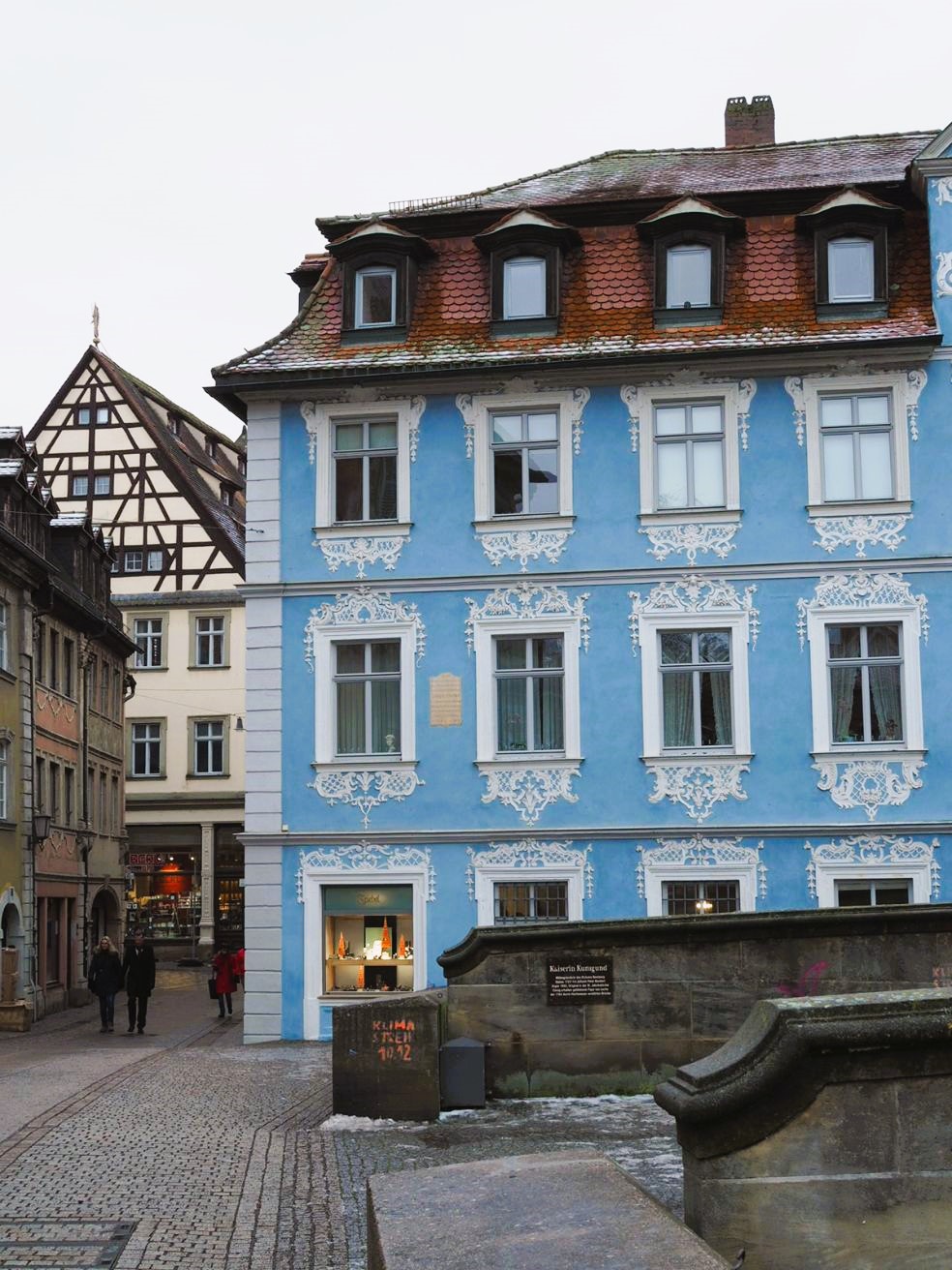
Top tip: You can also stop into the Kathe Wohlfahrt shop if you’re in need of Christmas supplies like unique tree toppers or handmade baubles. A good commiseration prize if you’re here outside of December and missed the cosy Christmas markets.
Who’s ready for a Rauchbier?


Now we’ve worked up an appetite with sightseeing so far, the centre of town has the most choice for you when it comes to traditional Franconian cuisine in some very historic settings.
Bamberg has its fair share of breweries and you can’t go wrong with stopping into the famous Schlenkerla for its speciality Rauchbier.
Rauchbier, or smoke beer, gets its flavour from the malt being dried over an open fire. This is a particularly ancient method of making beer and it’s been faithfully preserved here.
The same family has been running this pub for the past 6 generations, so you know you’re in good hands.
If you’re after the authentic Bamberg experience, order a Rauchbier and a Bamberger Zwiebel.
The Zwiebel is a hollowed-out onion, stuffed with mincemeat and bacon, slow roasted and then served with mashed potato and a smoked beer gravy. If the weather is chilly outside, you’ll be all warmed up after this meal.
Of course, there are plenty of other items on the Schlenkerla menu, if stuffed onions weren’t what you had in mind.
Other good options in the same area of the old town are Kachelofen or Ahörnla Braugaststätte, both serving up delicious classics in historic settings.
In the footsteps of the bishops
Since I’ve filled you up on good food and good beer, it’s only right that we now go for a bit of a walk to help the digestion.
Head over to the Katzenburg street and go up the stairs to the Domplatz.
You’ll find the Fortunata fountain at the top integrated into the sandstone wall, in the summertime, you can refill your water bottle here while you admire the view back over the city. Cross over the Domplatz or square to the cathedral, we’re going straight for the heavy hitters today.
This enormous cathedral, which somehow manages to feel even bigger against the little town of Bamberg, has been rebuilt twice.
Originally the church was finished in 1012, burnt down in both 1081 & 1185, then was finally rebuilt in 1237.
This final version was much grander thanks to the considerable wealth that Bamberg had accumulated by the 13th century and our friends Heinrich and Kunigunde are entombed here. Their hand-carved tomb is considered a masterpiece, taking the artist 14 years to create, and the carvings show their likenesses.
Including the panel where Empress Kunigunde must place her feet on red hot ploughshares to prove her innocence after being accused of adultery, luckily for her she passed!
And up to your left, you’ll see a noble knight seated on a horse, the famous Bamberger Reiter. He’s pretty much life sized and interestingly, no one really knows for sure who he is meant to represent. The statue dates from around 1225 so he’s been impressing for a while now.
Heading up the other end of the cathedral, you’ll find a golden throne made for the bishop-princes and the only pope’s grave north of the Alps just behind it, belonging to Pope Clement II.
Heading out of the cathedral now, we’re headed just to the left of the cathedral, over to the Alte Hofhaltung or Old Courtyard. Once upon a time, this was Heinrich’s palace but was pretty extensively rebuilt in the 1500s to the buildings we see today. Lined with multiple stories of flowerboxes, you can just imagine nobles in long robes looking down at you. It’s so atmospheric up here that they actually filmed part of the 2011 film The Three Musketeers in the courtyard, it’s definitely worth a stroll across the cathedral square. These days, the old palace houses a museum (paid entry) with lots of info about the history of little Bamberg which is only open during the warmer months.

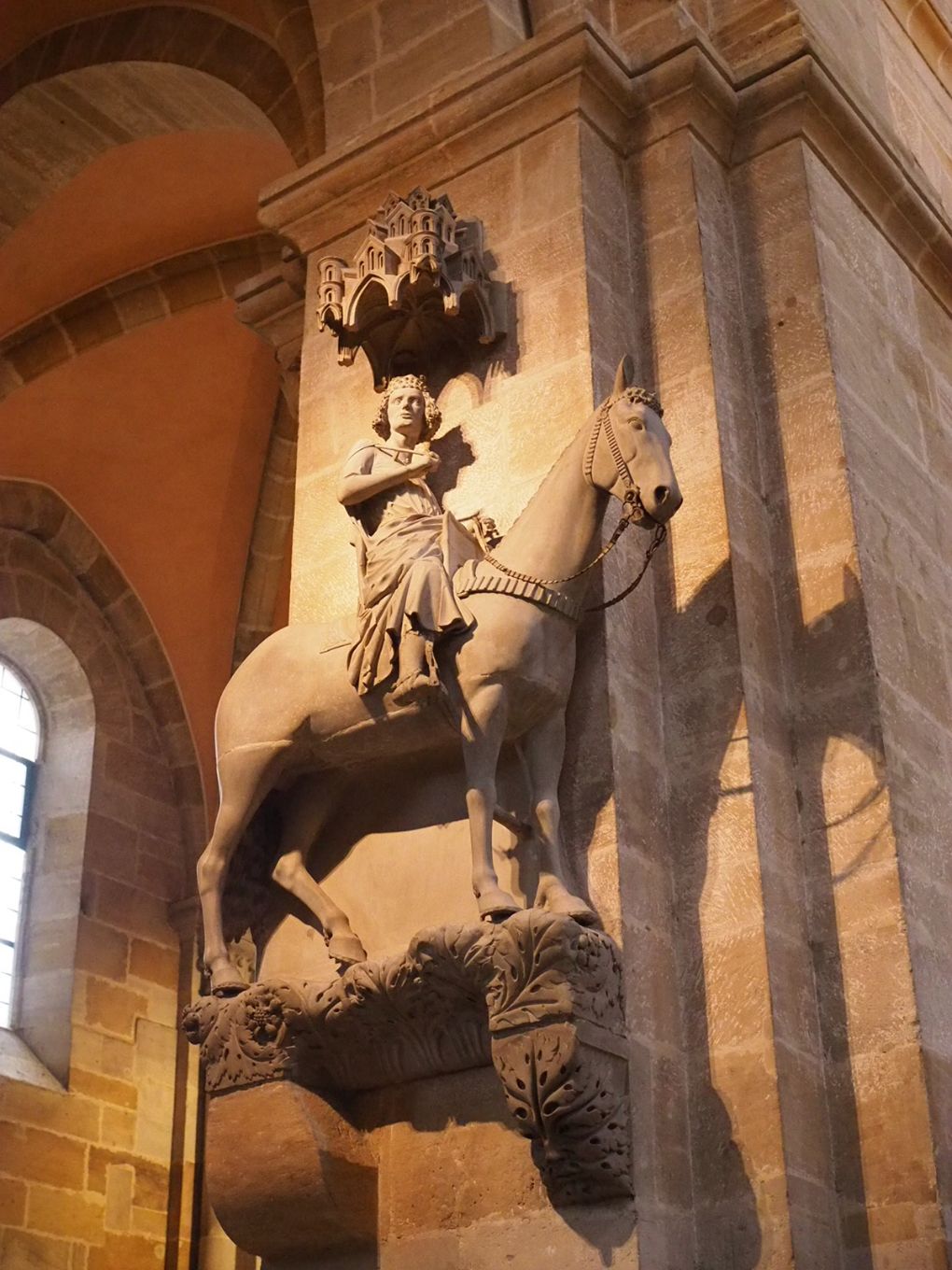
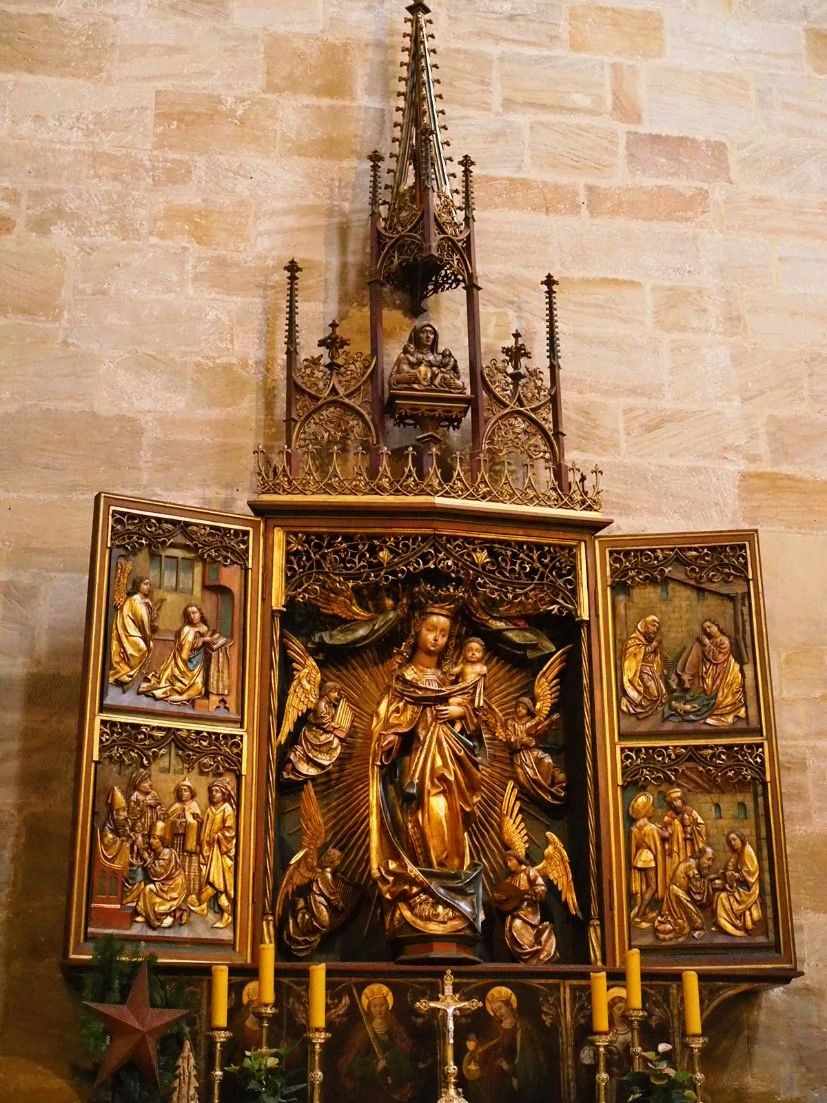
On the way out of the courtyard, you’ll pass through the sandstone Schöne Pforte (“beautiful gate”), formerly painted in bright colours.
The paint is long gone but we can still appreciate the ornate details that went into this royal gate!
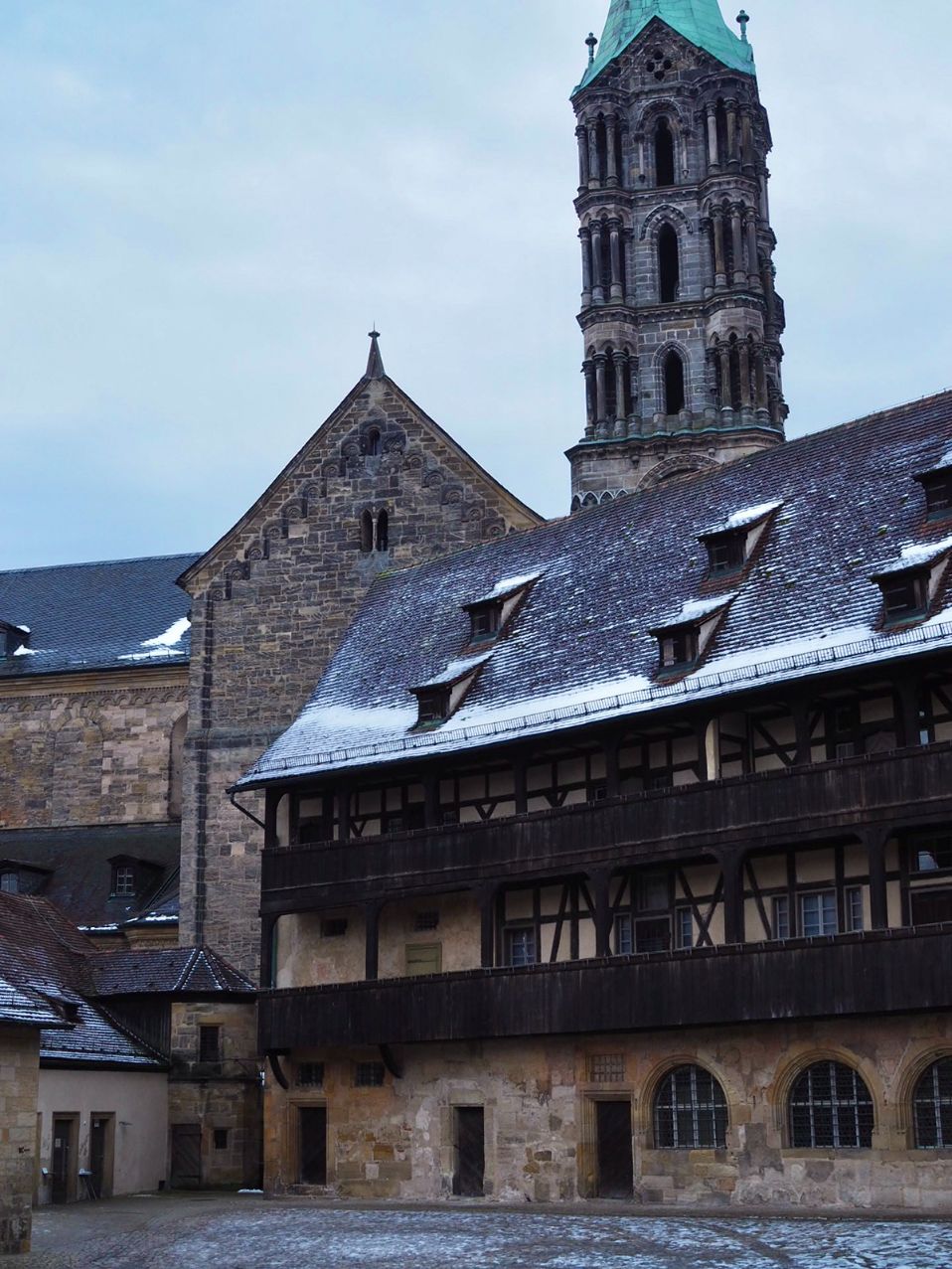


The last palace on this walking tour, I promise.
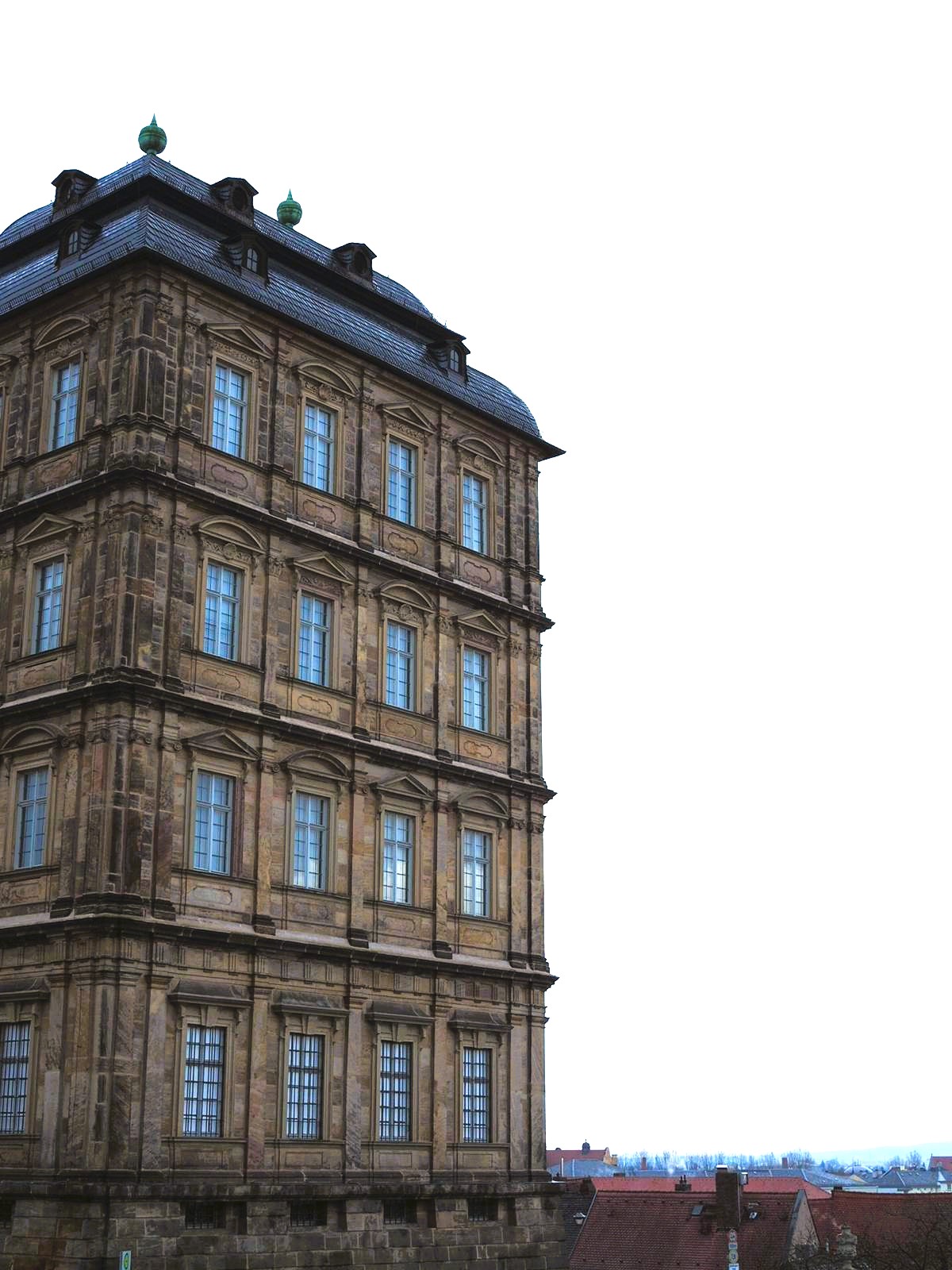
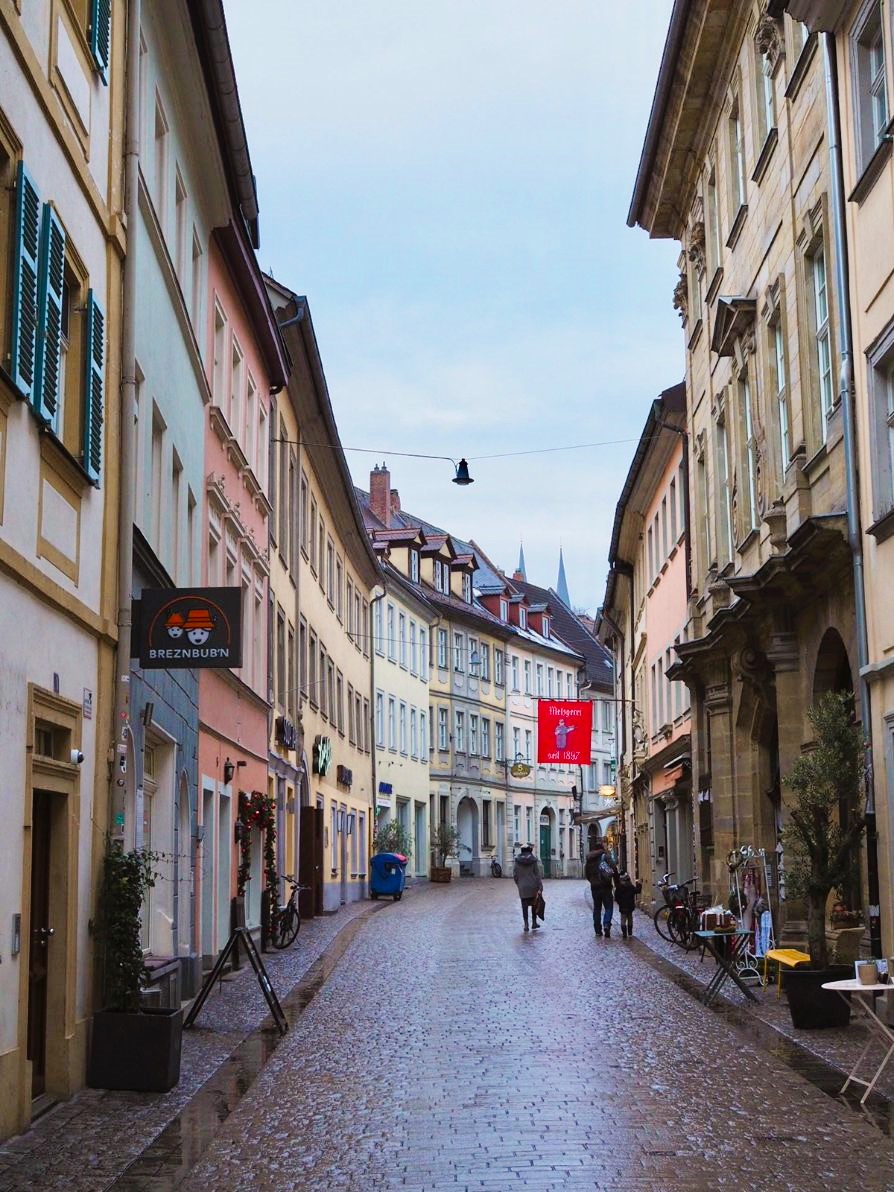
As you exit the gate of glories, the large rectangular building over to the left of the square is the Neue Residenz or New Palace. This Baroque building may not look like much from the outside but as a palace for the bishop-princes, the lavish interior harks back to its glory days. It was a running palace from 1602 up until about 1900, hosting Bavarian royalty after the bishops moved out. You can see the opulent furnishings and preserved decorations on a paid guided tour of over 40 staterooms, costing 6€ per adult in 2023. If you’re going to pay for entry to an exhibition in Bamberg, I’d pick this one – I wish all attractions in Europe were so budget friendly!
Whether you go for the guided tour or not, the enormous rose garden out the back of the palace is a must if you’re visiting in nice weather. Sadly while I was there, it was an elaborate arrangement of bare branches. But the photos when all the 5000 rosebushes are in bloom look utterly magnificent, as well as the sweeping views back over the old town. Intricate statues of Roman gods are sprinkled throughout the garden too. In addition to the fragrant surrounds, there’s also a little café that opens up over the spring and summer. Enjoying coffee and cake in the surrounds of a royal rose garden sounds like a delightful way to spend an afternoon if you ask me!
If the weather is unpleasant when you visit, I’d recommend heading back into the city centre and stopping by Café Am Dom or Café Hörnla for your afternoon tea date before you head off to further adventures.
Both offer a wonderful selection of baked goods to choose from and cosy nooks out of the cold.
Bonus sights for your walking tour of Bamberg
If you’ve still got the extra time and fancy walking another 1500 metres, Kloster Michelsberg tops another hill near the old town.
Built up here in the 1100s, the monastery has a variety of buildings, including the double spired main church which has been undergoing restoration works for some time now.
But the complex and its gardens have a commanding view back over the city and there are a few beer gardens around to refuel you before you head back down the hill.
If you’ve got the use of a car, you could also head out to Bamberg’s own castle, the Altenburg.
Set up on the highest hill surrounding the city, the castle was lovingly restored in the 1800s by a local doctor. These days you can find a restaurant and beer garden up there, the Germans know how to reward their visitors!
Double check their opening times before you go, especially if you’re visiting out of season.
You've reached the finish line of the ultimate walking tour & map of Bamberg, Germany
This brings our walking tour of the charming little town of Bamberg, Germany to an end.
I hope that you’ve enjoyed roaming around Heinrich and Kunigunde’s old real estate and soaking up the adorable cobblestoned streets.
And nabbed a new profile picture on the way around!
Don’t forget to pin this walking tour & map of Bamberg, Germany so you can find it later!
Looking for your next destination? Test out this guide to Nuremberg

